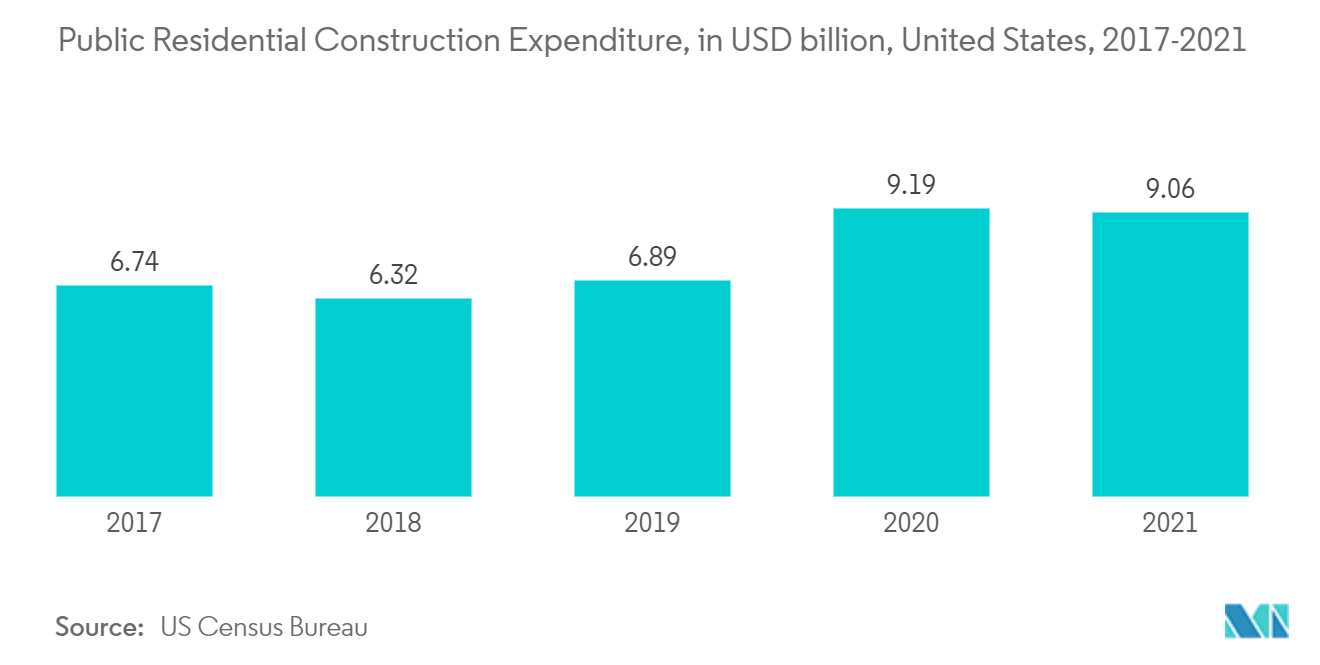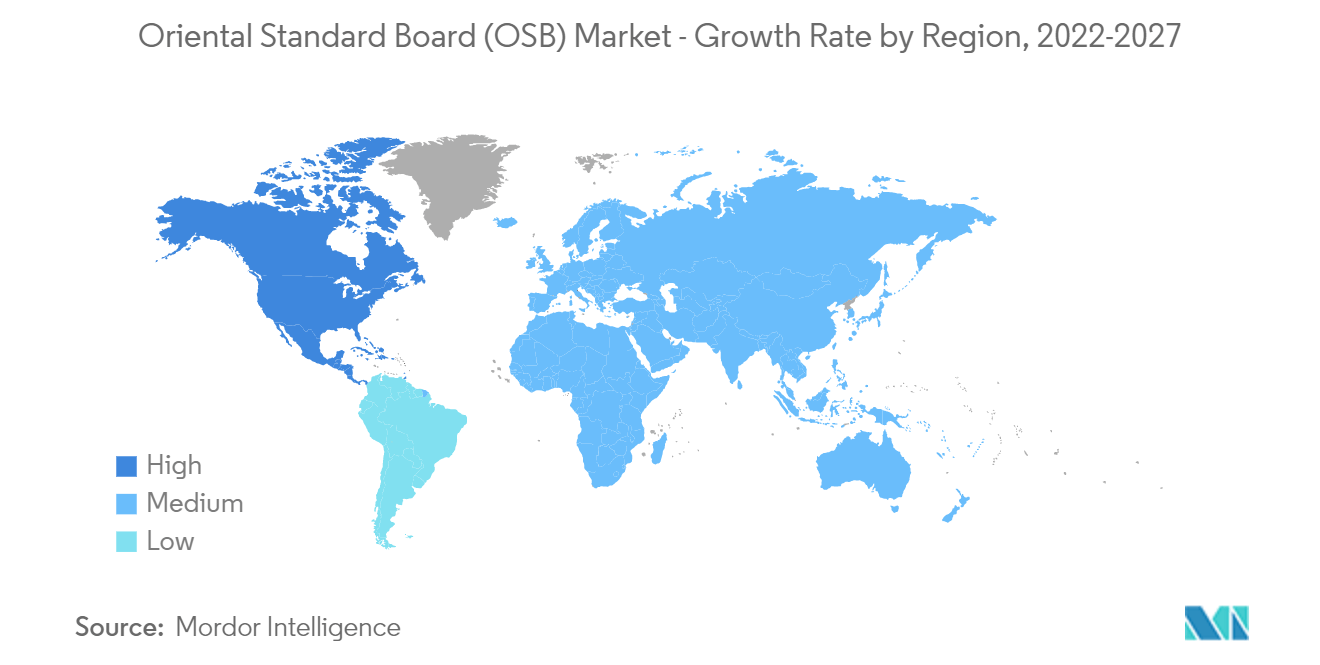Market Trends of Oriented Strand Board (OSB) Industry
This section covers the major market trends shaping the Oriented Strand Board Market according to our research experts:
Soaring Demand from the Construction Segment
- Wood-based panels are crucial to the construction industry, providing high structural durability to roofs and floors, walls, beams, doors, staircases, etc. OSB panels provide a stronger and stiffer panel than other products used in similar types of construction projects. The material eliminates rings and knots, which makes it more uniform. OSB is engineered to have strength and stiffness equivalent to plywood.
- Oriented strand boards are a cost-effective alternative for home construction. As per the National Association of Certified Home Inspectors (NACHI), OSB costs USD 700 less than plywood for a typical 2,400-square foot home.
- In several emerging economies in the Asia-Pacific region, the building and construction industry is doing well right now, while it has slowed down in countries in Europe, North America, and South America.
- China is promoting and undergoing a process of continuous urbanization, with a 60% rate targeted by 2020. Because of urbanization and the desire of middle-class urban residents to improve their living conditions, more living space will be needed in cities. This will have a big impact on the housing market and lead to more furniture and building projects that use OSB.
- As per the forecast given by the Ministry of Housing and Urban-Rural Development, China's construction sector is expected to maintain a 6% share of the country's GDP going into 2025. Keeping in view the given forecasts, the Chinese government unveiled a five-year plan in January 2022 focused on making the construction sector more sustainable and quality-driven.
- The construction industry is India's second largest, and it makes up a big part of the country's GDP.During the spread of the pandemic, the Indian construction industry saw a big drop in growth. However, in 2021, both public and private investments in the sector went up sharply.In Q1 2022, the construction industry contributed USD 45,4 billion to the GDP, according to the Ministry of Statistics and Program Implementation.
- According to the Instituto Nacional de Estadística y Censos (INDEC), construction activity increased by 0.4% in May 2022, compared to the previous month. The accumulated index for the first five months of 2022 of the original series index shows a rise of 6.3% compared to the same period in 2021. In Argentina, about 25% of the construction industry is occupied by the commercial sector and 75% by the residential sector.
- According to data from the US Census Bureau, between 2017 and 2021, the government spent a lot more on building homes for people.
Over the next few years, the OSB market is likely to be driven by the growing construction market in all regions.

North America to Dominate the Global Market
- North America is one of the largest construction markets worldwide in which the United States has a benchmark of expenditures reaching around USD 1.4 trillion. Construction in the commercial and housing markets seemed to be strong again in most parts of the country.
- While apartment construction remained elevated in the recent past, total spending is no longer climbing quickly. Single-family home construction slumped due to higher mortgage rates.
- According to the Engineered Wood Association (APA), new home construction is the primary end use for the OSB industry in North America (especially the United States), accounting for more than 50% of the OSB consumption.
- The United States boasts a colossal construction sector that plays a prominent role in commercial, industrial, institutional, residential, infrastructure, energy, and utility construction. The construction spending during January 2022 was estimated at a seasonally adjusted annual rate of USD 1,677.2 billion. Further, construction spending in the United States rose 1.3% in February, as compared to a seasonally adjusted annual rate of USD 1.677 trillion in January of 2022.
- The building and construction sector is the backbone of the Mexican economy. The increasing urbanization and public income levels are fueling the demand for construction in the country. The government bodies are responsible for most of the funds (around 68%) provided to the housing sector in Mexico. The government agencies, such as CONAVI (National Housing Commission), INFONAVIT, FOVISSSTE, and CFE, have been supporting the growth of the housing sector in the country.
- The U.S. furniture market is the largest in the world, consisting of over 39,644 domestic and international businesses. Additionally, the growth in disposable income enabled more consumers to purchase new household furniture rather than readily available second-hand items.
- All the above mentioned factors, in turn, are boosting the demand in the OSB market in the region.


